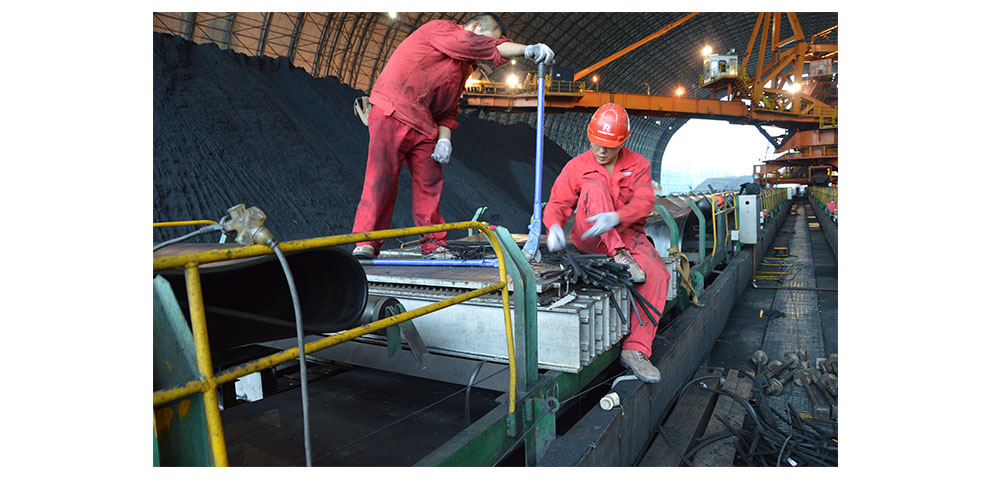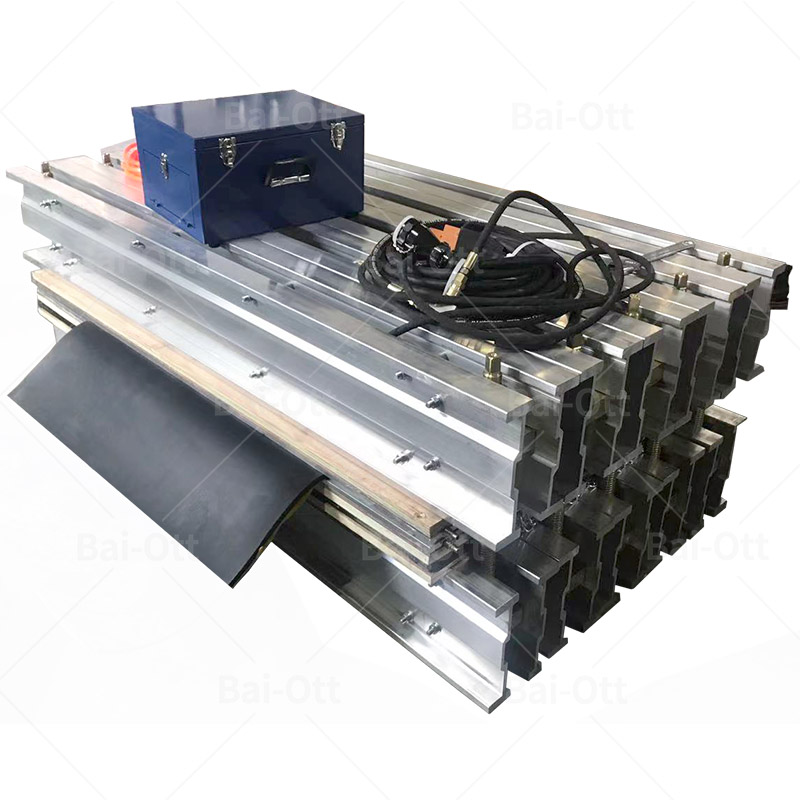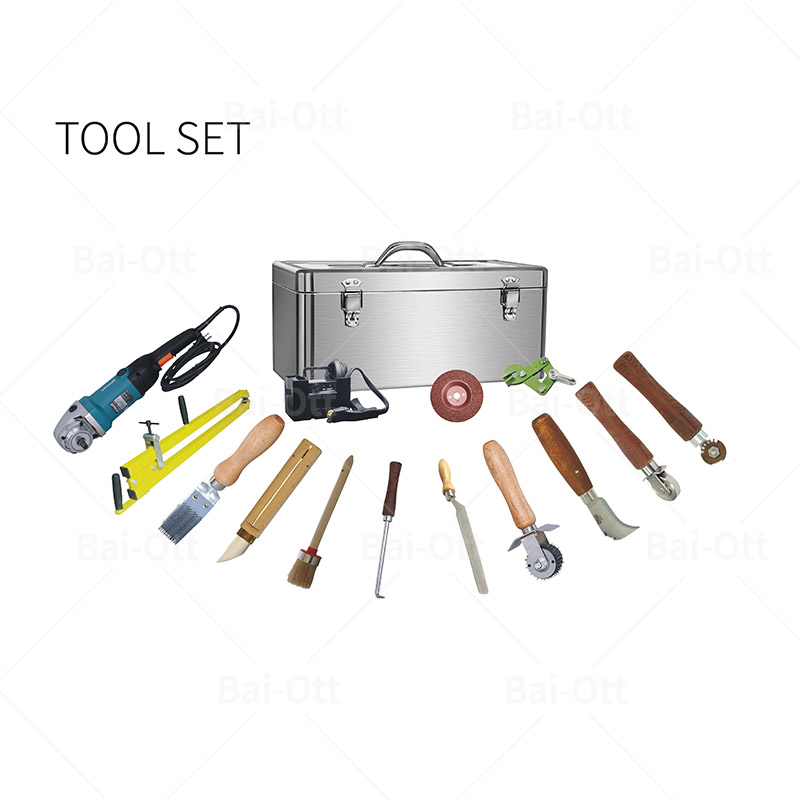How do you vulcanise a conveyor belt?
Conveyor belt joints are currently divided into three types: mechanical joints, cold vulcanization joints, and hot vulcanization joints. After a long-term practical test, the best application effect is the hot vulcanized joint. The mechanical joint is prone to cause scratch on the belt while the cold vulcanization joint is limited to cold adhesives. Once the adhesive is selected improperly, it will cause scratch to the joint surface for the cold vulcanization joint is greatly affected by the transportation volume. The hot vulcanization joint is a method of heating and pressurizing the joint part of the conveyor belt with the help of a vulcanizing machine.

Conveyor belt vulcanization joint operation process
1.Find a right angle at the joint of the conveyor belt, cut one end of the belt into an even edge, and fix the belt with a G-shaped card.
2.Use a knife to gently make a scratch at 820mm from the position without adhesive to the alined edge, and make a light cut to the break (820mm and 800mm each, be careful not to cut the first layer of cloth), use a knife to gently cut the surface rubber, use pliers to tear off the rubber on the surface of the break. Use a knife to cut the first layer of cloth in the middle of the break, poke the first layer of cloth with a peeling hook, and gently make a scratch longitudinally to tear off the surface rubber and the first layer of cloth. Use a knife to gently scribble a knife at 600mm, 400mm, and 200mm to create a break, and divide it into four countertops in turn according to this process. Be careful not to hurt the lower layer of cloth during the process of piercing and tearing the cloth.
3.Use a knife to flat the adhesive in the edge, so that it will be flat with the 4 fabric steps. Score 20mm on the back of the end of this connector and peel off the skin. Use a sander to polish off the residual rubber on each layer of cloth, including the rubber on the edge of the joint and the rubber on the back. Be careful not to damage each layer of cloth, and then use a tungsten carbide disc to clean the splicing surface.
4. After grinding, remove the dust and debris on the surface of the belt joint.
5. Clean up the debris on the vulcanizing plate of the workbench, and overlap the two leading wedge fingers. Recheck the centerline of both ends and adjust it to a straight line.
6. Clean the conveyor belt head with cleaning agent, and brush the wedge-shaped fingers with hot vulcanizing agent once. Pay attention to the brushing evenly. After drying, align the belt body according to the pre-marked mark, and cross-lap the wedge-shaped fingers. Press lightly with both hands to check whether the bottom layer of the joint is also flat and stretched, and smear the surface of the joint with hot vulcanizing agent 2-3 times, so that the hot vulcanizing agent can fully penetrate into the connection gap in the wedge-shaped joint to ensure the wedge-shaped tight connection.
7.Spread the uncured core rubber on the joint part, and try to spread it as flat as possible. It is recommended to make two cuts on the uncured core rubber with a wallpaper knife to avoid bulging, and then stick the joint part with the cover rubber.
8.Use the super light hot splicing machine, press the vulcanizing plate and crossbeams, fasten the bolts, check the vulcanization and control, power supply, etc., and turn on the vulcanizing machine.
9.Warm reminder: The vulcanization temperature should be controlled at 145℃. After the vulcanization joint of the conveyor belt reaches the vulcanization time, the pressure drop must be adopted to reduce the vulcanization temperature below 40℃ before the equipment can be dismantled.
I believe that you will have a relatively deep understanding of the vulcanized joints of conveyor belts through the above construction case analysis. Please call us if you have questions about the splicing vulcanization process and the procurement of tools. We will definitely provide you with detailed construction solution.






